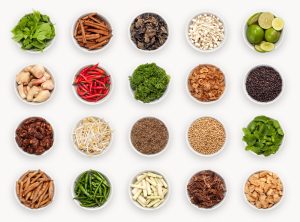Posted on July 28, 2017 by Kate Halsall
Did you know that food intolerance affects around 45% of people whereas food allergy only affects 2%? Would you know the difference between the two? Well it transpires neither did I! I’ve recently been struggling with some stomach problems. Whilst I believed that my good friend IBS was back for a visit, my circumstances have changed so much since the last episode that I started to self diagnose. I decided I was allergic to yeast. It was only when someone asked me whether it was a food allergy or food intolerance that I realised I didn’t know the difference! So how can you tell if it’s a food allergy or food intolerance….let me help you!
Food Allergy
Background Info
Have you ever wondered why “contains celery” now appears on a number of products? I mean come on – it’s just celery (or as Jenny calls it “the devils food”)! It’s there because there are 14 common allergens which any packages food (or drink) containing them must display by EU Law. For a list of these ingredients click here.
What is it?
In layman’s terms, a food allergy is when your immune system defends itself against or over reacts to a particular protein in food. Scarily you don’t have to have ingested the food to have an allergic reaction. Symptoms can occur when coming in contact with just a tiny amount of the food – and can come on rapidly. The symptoms of an allergic reaction include swelling and itchiness of the skin, hives, vomiting and diarrhea, difficulty breathing and in some serious cases, loss of consciousness. In a nutshell, a food allergy can be life threatening.
Food Intolerance
Background Info
Food Intolerances are a whole different kettle of fish as people react differently to different foods – and it’s not just food either; it could be drinks, additives and e numbers! For example, the most common intolerances are gluten, corn, wheat, oat, seafood, alcohol, yeast, dairy, egg and nuts.
What is it?
A food intolerance is generally linked to chemical reaction causing a digestive problem and is not life threatening. Whilst some of the symptoms can be the same as an allergy i.e. bloating, wind, stomach pain, diarrhea they don’t tend to appear until after a few hours and even up to 3 days after ingestion.
Ok so some of these symptoms sound familiar – now what?
As I’m not a dietician, nutritionist or GP, in these case we would always recommend that you get yourself to the doctor – it’s always best to get it checked. The other things you could do – and to be fair your doctor may recommend this – is try an elimination diet (this is what I’m currently doing), a fodmap diet or use a symptom tracker. Keep in mind that these are short term and temporary diets only, and you need to keep food diaries to ensure you know exactly what you’re eating and your symptoms. Don’t just self-diagnose, actually do something to help yourself such as visiting a doctor or someone who specialises in this area for a correct diagnosis before you jump to conclusions!
http://www.yorktest.com/food-intolerance-advice/problem-foods/
http://www.nhs.uk/conditions/food-intolerance/Pages/Introduction.aspx
https://www.allergyuk.org/information-and-advice/conditions-and-symptoms/36-food-allergy


